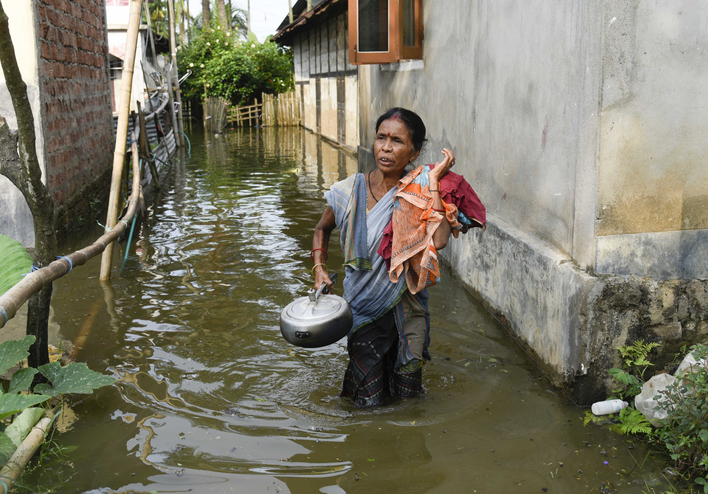There is a broad consensus that fiscal sustainability entails policies of public finance that promote economic growth, maintain national solvency and financial stability, and create stable taxes that are fair across generations. Drawing on the experience of Kenya, this column illustrates how establishing a fiscal consolidation plan that encompasses policies to reduce public spending and boost public revenues is vital for maintaining fiscal sustainability. Once the country is on a sustainable path, there is fiscal space allowing it both to finance new projects and to prepare for future economic shocks.
Sound public finances, reflected in prudent fiscal balances and a supportable debt position, are a prerequisite for sustainable economic development in developing countries. They contribute to credible government policies and to macroeconomic and financial stability. As such, to manage future pressures on public finances, it is vital to maintain prudent fiscal policy – the range of government actions that involve making changes in the pattern, structure, and level of public spending, taxation, and borrowing to achieve given objectives.
The sustainability of fiscal policy is defined by two indicators. First, the ratio of public debt to gross domestic product(GDP); second, the present value constraint, which requires that that the debt-to-GDP ratio remains finite for fiscal policy to be sustainable. An additional criterion states that a sustainable fiscal policy is one that would cause the discounted value of debt to be zero at the limit for the present value borrowing constraint to hold.
Notwithstanding the diverse definitions of fiscal sustainability, there is a broad consensus that fiscal sustainability entails policies of public finance that promote economic growth, maintain solvency, and create stable taxes that are fair across generations. As such, governments should strive for a sustainable fiscal policy given that an unsustainable policy has adverse implications for growth and financial stability. It affects macroeconomic performance, retards the smooth operation of the private sector, and generates economic instability, which could necessitate policy change. In addition, it poses a risk of rising future interest rates brought about by low private investor confidence in government debt, which may lead to a slowdown in growth.
Fiscal policy needs to be implemented in a sustainable manner to take advantage of the opportunities it offers to promote growth, employment, equity, and a favorable external balance, and to minimize exposure to the pitfalls associated with the policy. Fiscal sustainability and certainty are key for the medium- to long-term growth of any economy – which explains the significant attention paid to them by policy-makers.
Globally, a fiscal index is used to assess the short- and medium-term sustainability of fiscal policy and its impact on growth. This index, computed by the World Bank, ranges between one and six, where one is a low level of sustainability and six is a high level of sustainability.
In 2018, Kenya’s fiscal policy rating was 3.5, similar to that of Tanzania but lower than that of Uganda and Rwanda among the countries of the East African Community. Based on the rating, Kenya’s fiscal policy sustainability is moderate though higher than the average of 3.0 for sub-Saharan Africa.
Globally, Aruba had the highest rating in 2018 with a value of 5. This exemplary performance was achieved following implementation of recommendations outlined in the Road Map to Fiscal Sustainability in Aruba. These were classified in three broad approaches: actions to raise government revenues; spending reduction measures; and a complementary path entailing changes that targeted the decentralization of government functions, fiscal rules, and public debt management.
A recent assessment of the sustainability of fiscal policy in Kenya focuses on the country’s composition of expenditures and revenues, as well as analyzing the trend of its fiscal deficit. It also seeks to establish whether fiscal policy is currently sustainable.
Analysis of the country’s public spending indicates that the gap between development and recurrent expenditures in Kenya continues to widen. Recurrent expenditure has been more than twice development expenditure over recent years. The share of recurrent expenditure averaged 75.1% between 2008/09 and 2019/20, while the share of development expenditure averaged 24.9% over the same period.
Therefore, there is a need to review the expenditure allocation to meet the 30% threshold specified in the Public Finance Management (PFM) Act 2012. The composition of development expenditure showed that development projects accounted for the largest share (67%) of development expenditures, followed by Appropriations-in-Aid with a share of 31%. Other development expenditures accounted for 2% between 2008/9 and 2019/20.
The composition of recurrent expenditure indicates that Operations and Maintenance, and salaries and wages accounted for the largest shares over the same period.
Total government revenue is largely driven by tax revenue, and hence the stability of its contribution is key to anchoring expenditure decisions. Between 2008/09 and 2019/20, the share of tax revenue averaged 89.8% of total government revenue, while non-tax revenues and grants averaged 7.6% and 2.6%, respectively.
This implies that the performance of tax revenue is critical in financing government spending and therefore has a strong correlation with economic development. The disaggregation of tax revenue in Kenya into various tax heads indicates that income tax contributes the largest share of total tax revenue, followed by value added tax (VAT).
These findings indicate that fiscal policy is weakly sustainable, although fast in adjustment in case of disturbance caused by shocks to the economy. The evidence in the study shows that Kenya’s fiscal policy is sustainable within the period analyzed. But the country faces the challenge of its government expenditures growing at a higher rate than its government revenue.
These results are comparable with findings in ‘Regime changes and fiscal sustainability in Kenya’ and ‘Assessing fiscal policy cyclicality and sustainability for Kenya’, which established that fiscal policy was sustainable, though election expenditures threatened Kenya’s long-run fiscal sustainability.
It is imperative for the government – through the National Treasury, the State Department of Planning and the Kenya Revenue Authority – to adopt a fiscal consolidation plan that emphasizes reductions in spending and expansion of the tax base. There is also a need to review recurrent spending given that it accounts for almost three-quarters of total government spending.
To achieve this, the National Treasury and the State Department of Planning could focus on scaling down expenditure on salaries and wages as they account for the largest shares of recurrent expenditures. In seeking to increase tax revenues and expand the tax base, the government could consider tax policies and administrative measures that focus on rationalizing, awarding, and monitoring corporate income tax exemptions to safeguard the corporate tax base and ensure that the exemptions achieve the intended purpose.
Overall, Kenya is currently on a weakly sustainable fiscal path. Weak sustainability implies that government revenue does not fully finance government expenditure, triggering concerns about issues of public debt. Therefore, it is essential to develop a fiscal deficit reduction plan that will ensure that public finances remain on a sustainable long-term path.
The plan may broadly encompass policies that would reduce public spending or boost public revenues. This is vital given that once the country is on a sustainable path, it creates fiscal space allowing it both to finance new projects and prepare for future economic shocks.
Furthermore, it is important to coordinate effectively between the national and county governments, and among the various ministries, departments, agencies, and stakeholders, to ensure consistency in fiscal deficit reduction.






